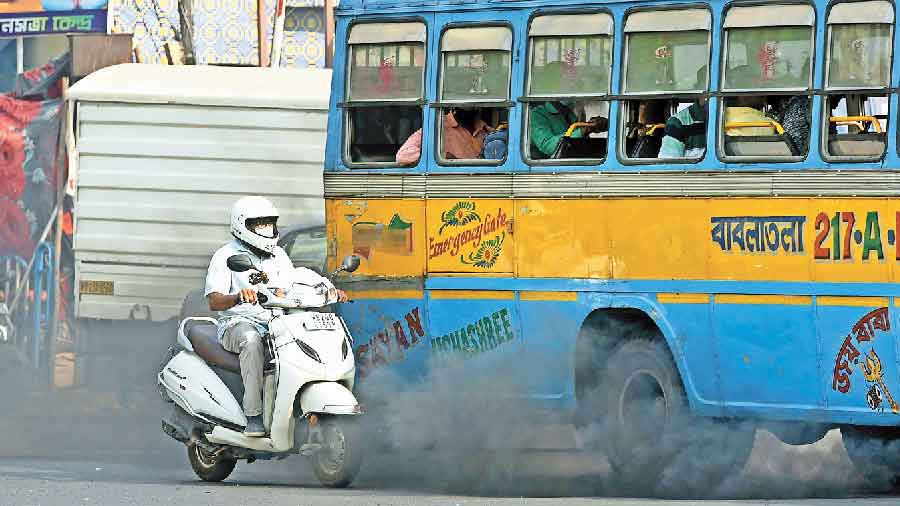The level of the most toxic air pollutant, PM 2.5, in Kolkata during the just concluded winter was more than 30 per cent higher than the national limit.
Around 40 per cent of the winter days had either very poor or poor air, shows an air pollution report released on Tuesday.
According to the Union environment ministry, “very poor” air “affects healthy people and seriously impacts those with existing diseases”. “Poor” air may lead to “respiratory illness on prolonged exposure”.
The report — Winter Air Pollution Trends: East India — was prepared by environment think tank Centre for Science and Environment (CSE).
It is based on real-time PM 2.5 data generated by the Central Pollution Control Board (CPCB) between October 1 and February 28.
PM 2.5 refers to ultrafine particulates, which are the most potent air pollutants as they can penetrate deep into the lungs and trigger a host of critical ailments.
Kolkata’s average PM 2.5 concentration during the 2022-23 winter was 80 microgram per cubic metre of air. In the previous winter, it was 79 microgram. The national limit is 60 microgram.
West Bengal’s average PM 2.5 concentration during the 2022-23 winter was 84 microgram. Asansol was the most polluted city in the state, having recorded an average PM 2.5 concentration of 102 microgram. Haldia, another industrial city, recorded an average PM 2.5 concentration of 46 microgram and emerged as the least polluted city.
“Kolkata had 26 very poor air quality days during the winter while the similar statistic was 12 in the 2021-22 winter months. Overall 64 days during the 2022-23 winter were either very poor or poor in terms of air quality in Kolkata; together consisting over two-fifth of the winter days,” says the report.
The analysis shows that Kolkata’s highest PM 2.5 value for a day during the winter was 151 microgram, 2.5 times above the national limit. The corresponding figure in the previous winter was 150 microgram.
In eastern India, Bihar was found to be the most polluted state with Begusarai being the most polluted city with an average PM 2.5 concentration of 275 microgram, 450 per cent above normal.
“The winter pollution level in Kolkata this season has been seven per cent lower than the mean of previous three winters but is still considerably higher than the standard,” said Anumita Roy Chowdhury, air pollution expert from CSE.
Roy Choudhury further said: “AQI (air quality index) categorisation of days shows that… the number of days with poor and very poor air quality has increased this winter compared to last year. However, it has not been as bad as winter of 2020-21.”
Abhijit Chatterjee, an air pollution expert with Bose Institute, said: “Clearly, the emission reduction in the city has reached a plateau. Unless we immediately start to cut down emission from major sources like solid waste and biomass burning, along with vehicular pollution and construction, it will be almost impossible to achieve significant improvement.”
Chatterjee said that along with macro actions, there was a need for micro-level actions and decentralised air pollution monitoring and control in the city.
